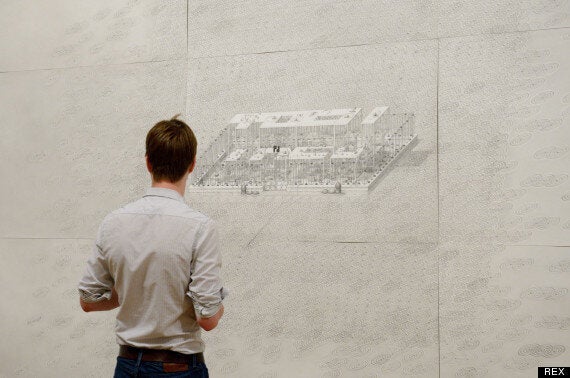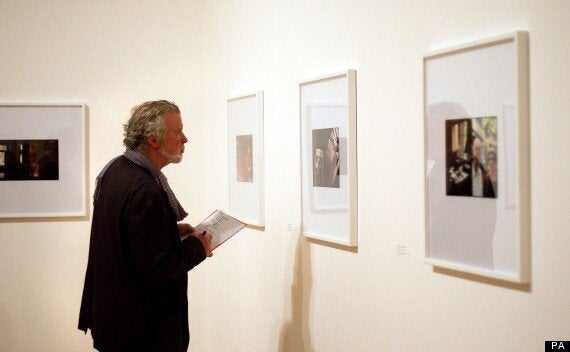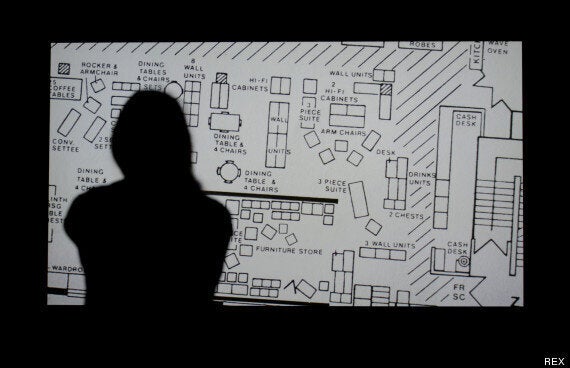
Some years the scorn that usually greets any mention of the Turner Prize feels justified, a reflection of a show always good at creating headlines but often short on genuine artistic merit.
Thankfully, 2012 is no such year. If you rolled your eyes when you read about sculptures of poo and an artist who changed her name to Spartacus, don't give up hope just yet.
A room of surreal and skillful drawings, two deeply absorbing but very different video installations and a moment of absurdist theatre share a space at the Tate Britain this year.
Returning to London after being held outside the capital for the first time in the prize's history in 2011, the curators have added a separate room of videos profiling the artists that pad out the show nicely. The only problem with the space is that occasionally the various sounds (it's quite a loud shortlist, as they go) infiltrate the other rooms, having an unfortunate effect on one another.
It's not as strong a shortlist as 2011's Gateshead show, predominantly because it's less eclectic and there is one notably weak entry, but it is another step forward for the reputation of the prize as the positive advert for British art it is supposed to be.

TREV2012 by Paul Noble
Paul Noble

Noble, the most enigmatic artist on this year's shortlist, creates huge, immensely intricate pencil landscapes that start with a word drawn in an invented 3D typeface he calls 'nobson font'. Some of the figures in his drawings resemble - though aren't explicitly referred to as - lumps of human excrement.
While this detail dominated early coverage of the prize for obvious reasons, in reality it's an unwelcome distraction. Noble's delicate and painstakingly-drawn scenes are far from crude or even particularly humorous: in one, the quiet detritus of an abandoned and broken green house floats in an ocean of perfect circles, like those left when a fish breaches the water's surface. It's a solemn and enchanting piece of work. His strange invented worlds - 'plays without acts or actors' as he calls them - are both lovely and lonely. Such a shame then that they're hung around three sculptures that, whichever way you try to look at them, resemble lumps of shit lying on top of each other.

Photographs hung outside Luke Fowler's video installation All Divided Selves
Luke Fowler

The first of the Turner Prize's two video offerings is from Glasgow-born Luke Fowler, who takes as his subject the psychiatrist R. D. Laing who challenged orthodoxies about mental illness during the 70s. Deconstructing the documentary form, Fowler weaves together archive footage of Laing, other documentaries on mental health from the period and original art house elements.
What emerges is not just Laing as the type of marginalised character Fowler has taken on as his subjects before, but a vivid sense of an era and of the artist himself. It's serious, purposeful video art as long as a TV documentary but never lapses into self-indulgence or incomprehensibility. If anything All Divided Selves can begin to feel almost too much like a straight-forward if compelling documentary for periods and could have done with more of Fowler's sparse artistic flourishes - but the overall affect is a beguiling one.

Spartacus Chetwynd, who leads family and friends in pieces of surreal performance art
Spartacus Chetwynd

That art needn't always be a deadly serious matter is a worthwhile point to make, but it's not really enough to sustain a piece on its own. The problem with the other of this year's headline-grabbing artists is that her carnival-inspired live performances aren't anywhere near as anarchic or exciting as she or her performers would like to think - not, at least, in the somewhat sanitized setting of the Tate Britain.
A troupe of actors dressed as tree people or colourful carnival characters (beautifully designed, it must be said, making the costumes the highlight of the show) gyrate to music and move puppets around a room in an incomprehensible narrative supposedly based on Jesus and Barabbas. At one point members of the audience are prompted to bow before a puppet and are then briskly ejected from the performance space, a process that is more awkward than immersive.
It's difficult to dislike an artist clearly having so much fun - Chetwynd says her approach is 'unbridled enthusiasm', which is certainly refreshing to hear - but really, this is the sort of stuff you can see outside during any day of the Edinburgh Fringe. I have no idea what it's doing on the Turner Prize shortlist.

In Woolworths Choir of 1979 by Elizabeth Price
Elizabeth Price

Price takes over a year to make each of her films, and it shows. In particular her 20 minute piece inspired by a fire in a branch of Woolworths in 1979 - in which 10 people died - is beautifully produced short that is the highlight of this year's show.
Set in three distinct parts, In Woolworths Choir of 1979 opens with an examination of the structure of a chapel using photographs, filmed footage and modern graphics. Passing through a middle section featuring music by 60s girl band Shangri-Las, it ends vividly documenting the fire using archive material. It sounds like it should be incoherent, but the strands are woven together by a number of motifs and metaphors.
So much to think about is crammed inside such a short space of time, yet overall, the piece flows almost like a modern music video, using text and sound effects to narrate the story . It's highly technically accomplished, but with a poetic touch. I hope it wins the top prize in December - it certainly deserves to.
